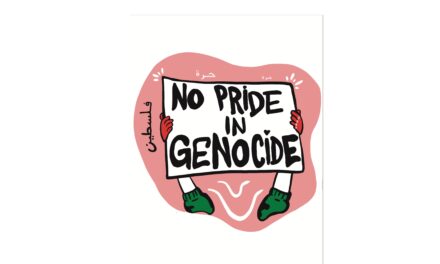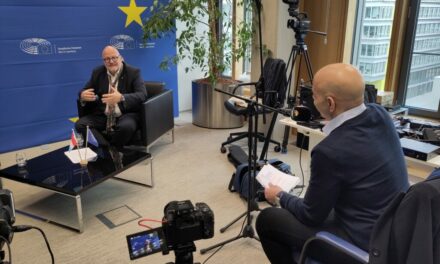LGBTQ+ families face unique financial challenges that often compound the pressures of non-LGBTQ+ family life. While same-sex marriage has gained legal recognition in many countries, systemic inequalities and societal biases continue to impact the economic well-being of same-sex households. These differences are particularly evident in income, wealth accumulation, and access to essential resources like housing and healthcare. This article explores specific financial challenges faced by LGBTQ+ families, focusing on factors such as income disparities, the costs of family-building, and the impact of legal and societal barriers.
Income gap
In the United States, LGBTQ+ adults continue to face significant financial disparities compared to their non-LGBTQ+ peers. Data from the 2022 Census Bureau’s Household Pulse Survey (HPS) reveals that 22% of LGBTQ+ adults earn less than USD 25,000 annually surpassing the rate of 14% among non-LGBTQ+ adults. Moreover, LGBTQ+ adults are less likely to achieve higher income levels, with only 23% reporting household incomes of USD 100,000 or more, compared to 31% of non-LGBTQ+ adults.
The Prudential Financial report, “The LGBT Financial Experience,” conducted in 2016-2017, sheds further light on these imbalances. Based on an online survey of United States citizens, the report analyzed responses from 1,376 LGBTQ+ individuals and 503 members of the general population. The findings reveal that the income gap extends beyond gender and is influenced by sexual orientation. Lesbians (average age 42) reported an annual income of USD 45,606, while gay men (average age 46) earned USD 56,936, bisexual women (average age 36) earned USD 35,980, whereas bisexual men (average age 43) earned USD 85,084 and heterosexual women (average age 45) earned an average of USD 51,461. Additionally, SHED data indicate that 44% of LGBTQ+ adults were homeowners in 2021, compared to 68% of non-LGBTQ+ adults.
Despite the overall financial challenges faced by LGBTQ+ families, certain subgroups experience even greater hardships. This data underscore the considerable salary differences among LGBTQ+ individuals, with lesbians and bisexual women consistently earning significantly less than their gay and bisexual male counterparts. Consequently, lesbian couples often encounter more severe financial struggles compared to gay couples. The Survey of Consumer Finances (SCF) for 2013-2019 underscores these disparities, demonstrating that female same-sex couples possess approximately USD 82,000 in median wealth, less than half the median wealth of mixed-sex couples. Further analysis from the Survey of Household Economics and Decision making (SHED) in 2021 highlights that 65% of bisexual women have household savings and investments below USD 50,000, exceeding any other gender identity/sexual orientation group. In contrast, only 45% of straight women report having less than USD 50,000 in savings and investments. This financial inequality can exacerbate the stress associated with family planning, as LGBTQ+ families often incur additional costs when expanding their families.
Parenthood
The journey to parenthood is demanding, regardless of individual circumstances. Discrimination remains a significant issue, as illustrated by the experience of a 38-year-old gay man living in Luxembourg, who told the European Union Agency for Fundamental Rights (FRA): “We absolutely need more rights and recognition as an LGBT family with children. Nobody is properly trained on LGBT families, including schoolteachers and administration staff, and this is a major issue in 2023.”
Beyond discriminatory obstacles, the costs associated with raising a child, including childcare, healthcare, food, clothing, and education, are substantial. In the US, it is estimated that the average cost of raising one child for the first eighteen years of life exceeds USD 230,000. The 2018 report “Building LGBTQ+ Families: The Price of Parenthood,” published by Family Equality, highlights the intersection of the relatively high costs of family-building for LGBTQ+ individuals and the disproportionately high rates of poverty within these communities. The report emphasizes that LGBTQ+ families often face increased expenses when bringing a child into the family through adoption, foster care, or assisted reproduction.
LGBTQ+ individuals have diverse options when considering family growth, including foster care, adoption, at-home insemination, platonic co-parenting arrangements, surrogacy and medical procedures such as In Vitro Fertilization (IVF), Intracytoplasmic Sperm Injection (ICSI), cryopreservation of gametes or embryos, and the use of fertility medication. Each path carries its own set of costs and legal requirements to secure parental rights, making them more or less accessible to individuals with varying levels of household income and societal privilege. The cost of IVF with one’s own eggs can range from EUR 2,500 to EUR 7,000, depending on the country where the procedure is performed. Egg donation typically costs between EUR 4,000 and EUR 12,000. Egg freezing is estimated to cost between EUR 1,600 and EUR 5,000. Surrogacy is not legal in many countries, limiting access to this option. The associated costs are substantial, typically starting from EUR 50,000 for a surrogate mother.
Legalized same-sex marriage in EU and US
Legalized same-sex marriage offers crucial protection against discrimination and grants access to various financial and legal benefits. A lesbian female, boomer, explains to Prudential, “[…] I did not realize before how important the right to marry was. It includes people in society, allows them to participate as a family like everyone else”. These benefits encompass tax advantages, healthcare insurance, hospital visitation rights, and official recognition as a legally valid couple. In the event of a partner’s death, same-sex marriage ensures inheritance and insurance coverage for surviving partners and children, providing vital financial and legal security. “I no longer have to worry about what will happen to my husband in the event of my death – his interests are protected now that we are married”, a boomer gay man told Prudential. As of February 2024, 21 European countries have legalized same-sex marriage. These include Andorra (2023), Austria (2019), Belgium (2003), Denmark (2012), Estonia (2024), Finland (2017), France (2013), Germany (2017), Greece (2014), Iceland (2010), Ireland (2015), Luxembourg (2015), Malta (2017), the Netherlands (2001), Norway (2009), Portugal (2010), Slovenia (2022), Spain (2005), Sweden (2009), Switzerland (2022), and the United Kingdom (2013). In the United States, same-sex marriage was recognized nationwide in 2015.
Step-by-step
Addressing the financial disparities faced by LGBTQ+ families requires a multifaceted approach. Even so, policymakers must implement measures to combat discrimination in the workplace, ensuring equal pay and opportunities for LGBTQ+ individuals. Additionally, expanding access to affordable healthcare, childcare, and education is crucial for alleviating the financial burdens associated with family life. LGBTQ+ individuals, who often face unique financial challenges, are strongly encouraged to prioritize their personal finances and establish clear financial goals for themselves and their families. By implementing effective budgeting strategies, saving diligently, managing debt responsibly, and gaining a better understanding of credit, LGBTQ+ individuals can take significant strides toward achieving financial independence and creating a more secure future. Personal finances don’t have to be intimidating. By taking it one step at a time, it is possible to demystify the complexities and build a solid financial foundation.
Illustration: Isabel Spigarelli/Canva





